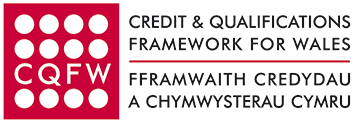Managing Lymphoedema in Children and Young People (age 0-25)
- Unit ID:
- CDL447
- Unit Code:
- PH55CY008
- Level:
- Five
- Credit Value:
- 6
- Sector:
- 1.2
- LDCS:
- PH5
- GLH:
- 28
- Last registration date:
- 31/12/2020
- Lower age restriction:
- 18

Purpose and Aim
To develop the knowledge and skills of registered practitioners in the management of lymphoedema in children and young people (age 0-25).
Learning OutcomesThe learner will
|
Assessment CriteriaThe learner can
|
||||||||||||||||||
|---|---|---|---|---|---|---|---|---|---|---|---|---|---|---|---|---|---|---|---|
|
|
||||||||||||||||||
|
|
||||||||||||||||||
|
|
||||||||||||||||||
|
|
||||||||||||||||||
|
|
Assessment Methods:
- Case study
- Essay
- Oral question and answer
- Written exercise
- Group discussion
There are no prescribed assessment methods for this unit. Assessments used should be fit for purpose for the unit and learners, and generate evidence of achievement for all the assessment criteria.
Assessment Information:
AC1.3 to include:
Primary lymphoedema including:
- Syndromic
- Turners Syndrome
- Noonan Syndrome
- Congenital less than 1 year
- Systemic Visceral Involvement
- Lymphoedema Distachiasis
- Vascular abnormalities/ disturbed growth
- Late onset
Secondary lymphoedema including:
- Cancer
- Infection
- Surgery
- Obesity
- Lipoedema
- Dependency
- Skin conditions
AC1.6 impact to include:
• Physical
• Psychological
• Social.
AC2.1 reference must be made to:
• Safeguarding
• Gaining consent
• Restraining and handling
• Childrens charter
• The rights of the child
• Manual handling
• Infection control
• Risk assessment
• Communication.
AC3.3 reference must be made to:
• Children and young people
• Carers / Foster carers
• Teachers/ teachers assistants
• School nurses
• Health visitors
• Paediatric AHP
• Social workers
• Psychologists
• Doctors / GP
• Police
• Other agencies.
AC3.4 reference to include physical and communication abilities.
AC4.1 assessment to include:
• Subjective
• objective
• general examination
• skin and tissues
• functional movements
• relevant measurements.
AC4.1 and 4.2 Ensuring that:
• the plan of care is discussed and understood by the family/ carers as well as the child or young person with lymphoedema.
• health care professionals and other agencies involved in the care of the child or young person with lymphoedema are informed of the assessment and management plan.
AC5.1 to include others involved in their care.
If not specifically stated in the assessment information, a plural statement in any assessment criterion means a minimum of two.
ESDGC:
The following key themes can be integrated into this unit

Health
NOS:
Other Mappings:
NHS KSF: G7, HWB2 level 3, HWB7 level 3, HWB6 level 3.
Assessor Requirements:
Assessment of this unit may only be conducted by an occupationally competent registered practitioner approved by the National Clinical Lead for Lymphoedema for Wales.